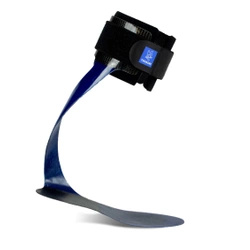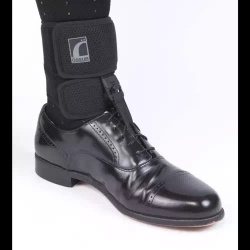Drop foot braces for treating peroneal nerve palsy
( number of products: 53 )Drop foot syndrome is a condition that affects the peroneal nerve, causing the foot to drop at the toes, making it difficult for sufferers to drive or even walk. To combat this decrease in comfort of mobility as well as avoid muscle degeneration, a drop foot brace is recommended - but how do you choose the right drop foot orthosis for you?
Foot drop brace - when should it be used?
A foot drop brace is a rehabilitative orthosis used in the case of a damaged peroneal nerve. Damage to this nerve can be caused by illness, trauma caused by an accident, stroke or even the degeneration of the spine, which may cause nerve palsy.
Foot drop syndrome significantly impedes basic activities, such as walking and driving. Instead of supporting the body during movement, the foot falls slightly at the toes, towards the ground. As a result, foot drop sufferers are forced to lift their affected leg higher, which can strain the knee and hip joints. Since walking is restricted to dragging the foot forward, starting with the toes, this condition isn’t a physiological form of movement, thus resulting in sufferers tiring out significantly faster and making any form of movement strenuous.
Before purchasing a drop foot brace, it is vital to consult with your physiotherapist. They will help you pick one that’s best-suited for the rehabilitative stage you’re in, as well as your condition, in order to help restore mobility and comfort in daily activities. The specialist will help choose the right sized foot brace and one that will suit your lifestyle best.
Foot drop brace - roles and effectiveness
A well-chosen foot drop brace plays a very simple role in the rehabilitative process - it maintains dorsiflexion, or in other words, keeps the foot bent upwards, necessary for proper movement, which cannot be done due to the peroneal nerve palsy. When worn, the brace slightly bounces off the ground and is flexible enough to allow the wearer to drive in it - making daily activities less troublesome.
The average foot drop brace is made up of various materials which are used for relieving symptoms of said syndrome. Ankle foot orthosis, or AFO braces for short, are made to stabilize and enable physiological positioning of the ankle and foot, without limiting mobility. In short, thanks to this type of brace, you will experience far-less difficulty when walking.
Physical activity is a vital part of the rehabilitation process, as it helps prevent muscle degeneration. Foot drop syndrome discourages the sufferer from moving and makes every attempt at doing so a tedious effort - which gives all the better reason to consider a well-chosen brace for foot drop. Not only does it keep the foot in the right position, but it also allows for easier movement and reduces strain on the shin, making walking less of a hassle.
What orthoses options are there?
The products available in this category are modern, rehabilitative foot drop braces that will improve your comfort of mobility during everyday activities. Orthoses can be worn all the time - both during the day and at night, even while you sleep. There are various options for foot braces - ranging from compact, elastic models that are fixed to the shin and can be worn with footwear, to more rigid foot drop braces and simple bands. Our store offers these, as well as more exclusive models made of carbon fiber, as well as ankle brace boots.
An elastic foot drop orthosis helps to secure the ankle and maintain its proper functioning, thus allowing for easier movement - additionally, it helps to rehabilitate the foot by activating it’s muscles and allowing for better oxygenation.To better fit your foot, simply cut the bottom part according to the size of the insole of your shoes.
Flexible ankle foot orthoses are often made of carbon and glass fiber, which guarantees them durability, comfort and discretion. The foot drop orthosis can be worn under trousers, and has a high-quality lining, guaranteeing comfort and no wear abrasions on the skin - specifically in areas where the brace covers the shin.
Frequently asked questions (FAQ)
1. Can I wear the brace to sleep?
Yes - in fact, an ankle foot orthosis can, and in some instances should be worn during sleep. Consult a physiotherapist who will make appropriate recommendations.
2. Can I drive while wearing an orthosis?
For driving, it is recommended that you look into getting a foot brace with backrest support, as they allow the foot to move down, without blocking the ankle joint, letting you operate the car pedals with ease.
3. Can I wear foot drop braces with shoes on?
Most orthosis models allow you to wear them with footwear. In some cases, you should cut the lining to the right size, ensuring comfort of movement. A well-chosen size allows you to wear the brace under clothing as well.

Allard BlueRocker 2.0 Foot-Drop Brace Carbon Composite AFO

Centri Dynamic Walk Standard Foot Drop Brace For Driving

Dynamic ankle foot orthoses WalkOn Reaction Lateral 28U34 Ottobock

















